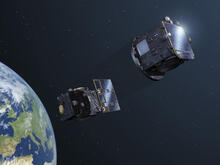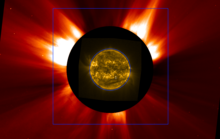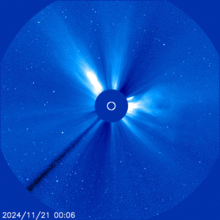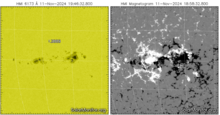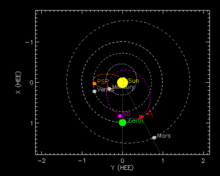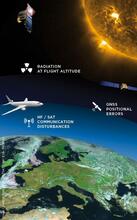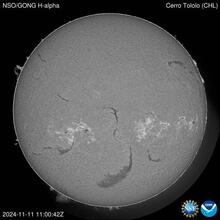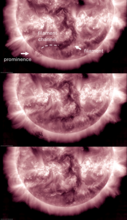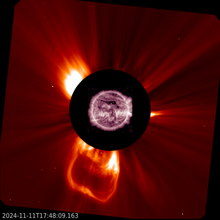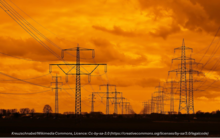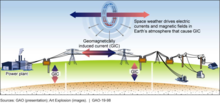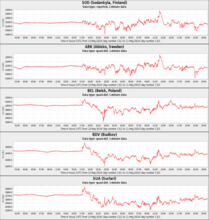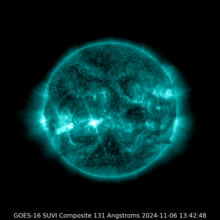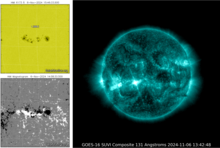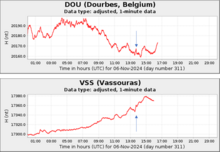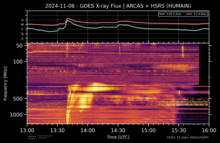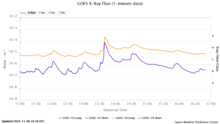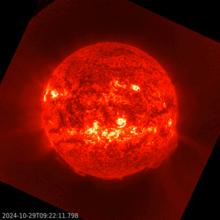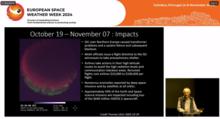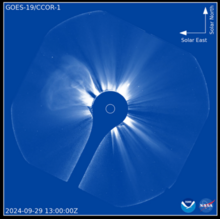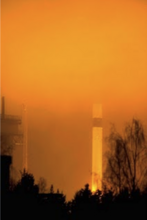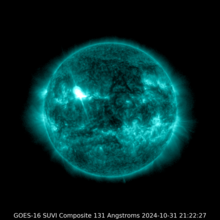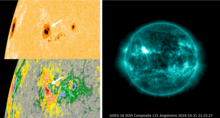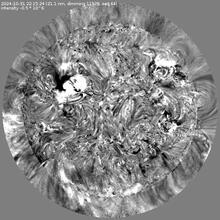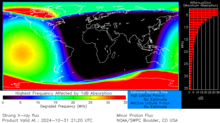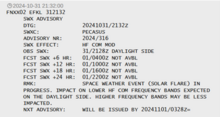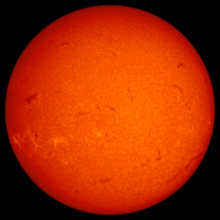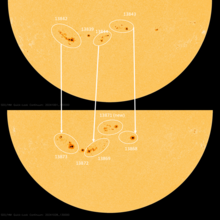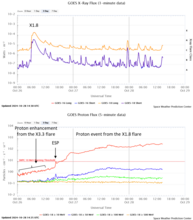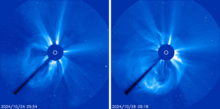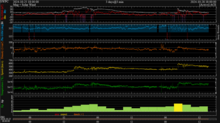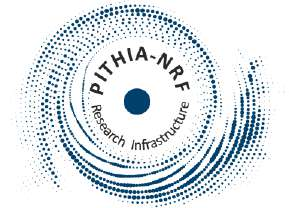news
Submitted on 2024-11-29
NL - FR
Proba-3 is the latest ESA mission to be launched in December, 2024. The exploitation of ASPIICS, the instrument imaging the solar corona, is in the hands of the Royal Observatory of Belgium (ROB), where the associated scientific research will also be coordinated.
Submitted on 2024-11-25
Last week was marked by a surprise proton event, with its source on the Sun's farside.
Submitted on 2024-11-18
NL - FR
November 2019: The Solar-Terrestrial Centre of Excellence (STCE) launches an unprecedented service that alerts pilots and air traffic controllers.
Submitted on 2024-11-18
An interesting filament eruption took place in the Sun's southern hemisphere on 11 November.
Submitted on 2024-11-13
A summary of the impacts on the power grids during the 10-11 May 2024 geomagnetic storm, as presented during last week's ESWW.
Submitted on 2024-11-08
After a small delay due to problems with transport, the two satellites finally made it to India. They landed safely on November 5 to be transported to the launch site in Chennai. There, the final preparations for launch are ongoing. Currently the launch of Proba-3 is planned for December 4.
Submitted on 2024-11-06
Another X-class flare, another source region. NOAA 3883 produced a X2.3 flare on 6 November.
Submitted on 2024-11-04
ESWW 2024, a prominence eruption, first images of CCOR, and PROBA2's 15th anniversary.
Submitted on 2024-11-01
Another X-class flare, and once again from a different region. NOAA 3878 was the source of an X2.0 flare on 31 October.
Submitted on 2024-10-29
The solar storms of 24 and 26 October are compared from the initial X-class flare to the geomagnetic disturbance that resulted from the associated coronal mass ejection.
Pages
Zircon - This is a contributing Drupal Theme
Design by
WeebPal.

